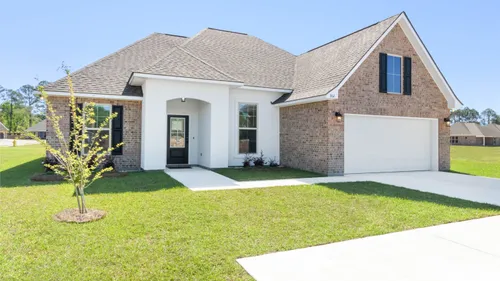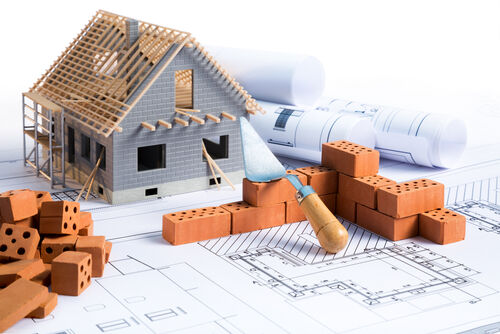Custom-made Bathroom Remodeling Indiana to Boost Comfort and Value
Custom-made Bathroom Remodeling Indiana to Boost Comfort and Value
Blog Article
Just How a General Contractor Can Change Your Typical Areas Into Useful Rooms
The change of usual locations right into useful rooms is a nuanced process that needs a basic service provider's knowledge in evaluating certain area demands and making tailored remedies. By taking into consideration variables such as format, accessibility, and aesthetic appeal, a service provider can produce atmospheres that not just serve useful purposes but additionally foster area involvement. With efficient project administration and adherence to quality criteria, these improvements can dramatically enhance user experience. Yet, the intricacies associated with stabilizing design and performance elevate vital concerns about best techniques and prospective obstacles that merit more exploration.
Assessing Current Common Location Demands
When assessing common areas, it is vital to recognize and recognize the details demands of the area they serve. This process starts with a comprehensive assessment of present use patterns, which entails event data walking website traffic, optimal use times, and tasks happening within these spaces. Engaging with neighborhood members via surveys or meetings can supply beneficial understandings into their choices and difficulties.
Following, it is essential to consider the demographic structure of the neighborhood, including age, lifestyle, and any special requirements that may affect how these spaces are used. Family members with young children may call for play locations, while older adults may prioritize accessibility attributes.
In addition, evaluating the existing infrastructure and services is vital. Determining locations that are underutilized or in requirement of repair work can inform possible improvements. Working together with stakeholders, such as building supervisors and local companies, makes sure that the analysis shows an extensive understanding of the neighborhood's needs.
Inevitably, a careful assessment of existing typical area requires prepares for effective makeovers, enabling the development of spaces that promote engagement and boost the total lifestyle within the area.
Designing for Capability and Appearance
A detailed understanding of community requires sets the phase for efficient layout that balances functionality and appearances in usual areas. Effective design calls for a thoughtful technique that considers both the functional usages of the area and the aesthetic charm that boosts the atmosphere.
Useful style requires developing rooms that deal with the particular tasks and interactions of the neighborhood. This might consist of flexible seating setups for events, easily accessible paths for individuals with flexibility difficulties, or designated locations for entertainment activities. Each aspect has to serve a function while guaranteeing convenience of movement and convenience for users.
The choice of shades, products, and illumination can significantly impact the understanding of a room. Furthermore, lining up the layout with the area's social identity can foster a feeling of belonging and pride.
Budgeting and Resource Appropriation
Effective budgeting and source appropriation are vital parts in the effective change of typical locations. A well-defined budget plan lays out the financial criteria within which the task must operate, ensuring that expenses are managed and sources are properly utilized. This begins with a comprehensive evaluation of project demands, including style aspects, products, and labor.

A general service provider plays an essential function in this stage, working together with stakeholders to develop practical budget estimates that line up with the designated vision. By focusing on necessary functions and discovering cost-efficient alternatives, the service provider can maximize costs without jeopardizing high quality.
Source allotment entails purposefully designating personnel, devices, and materials to various stages of the project (Bathroom Remodeling Indiana). This needs mindful preparation to stay clear of delays and guarantee that each element is delivered on schedule. Furthermore, routine surveillance of expenses against the budget helps to recognize possible overruns early, permitting timely adjustments
Taking Care Of Construction Process Effectively
Handling the building process efficiently is necessary for achieving prompt project completion and keeping budget plan stability. A well-coordinated strategy involves careful preparation, clear communication, and efficient source management. General contractors should develop a comprehensive project timeline that outlines each stage of building and construction, Web Site allowing for the recognition of crucial turning points and potential traffic jams.
Normal progression meetings are crucial for keeping all stakeholders notified and aligned. These conferences promote the timely resolution of problems, making certain that the task remains on track. Additionally, utilizing project management software can improve communication, track progression, and manage documents, reducing the chance of delays and misconceptions.
Efficient source appropriation is likewise paramount. By making certain that products, labor, and tools are readily available when needed, basic professionals can prevent expensive interruptions. Executing a positive strategy to run the risk of administration further boosts effectiveness, as it permits for the identification and mitigation of prospective difficulties prior to they rise.

Guaranteeing Conformity and High Quality Criteria
Compliance and top quality standards are essential to the success of any type of building and construction job, making certain that the finished rooms not only fulfill customer expectations but likewise stick to governing needs. A basic contractor plays a pivotal duty in imposing these criteria throughout the construction process.
First, it is necessary for the this link specialist to stay upgraded on local building regulations, security policies, and market finest practices. This expertise allows them to direct style options and product options that align with conformity requirements. Normal inspections and high quality assessments during the building and construction phase aid to recognize potential problems early, alleviating expensive delays and rework.
Furthermore, a credible basic service provider fosters a culture of high quality among employees and subcontractors. This can be accomplished by giving training on compliance methods and carrying out stringent quality assurance procedures. By developing clear communication networks, the contractor can make certain that everyone involved understands their responsibilities concerning conformity and high quality.
Final Thought
Finally, the duty of a basic specialist in transforming typical areas right into practical rooms is pivotal. Via a comprehensive assessment of community requirements, thoughtful style, meticulous budgeting, and reliable task monitoring, these experts can produce settings that improve use and aesthetic charm. Adherence to compliance and quality requirements even more makes sure that revitalized spaces not just fulfill the expectations of stakeholders yet likewise foster engagement and enhance the overall experience for all customers within the community.
The transformation of usual locations into functional rooms is a nuanced procedure that needs a basic professional's expertise in assessing specific neighborhood needs and creating tailored solutions. By considering elements such as format, availability, and visual allure, a contractor can develop settings that not just offer functional functions but also foster area involvement. General contractors have to develop a thorough project timeline that lays out each stage of construction, allowing for the recognition of critical turning points and potential bottlenecks.

Report this page